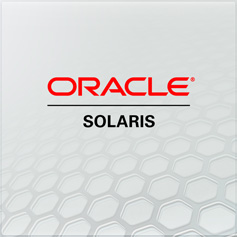
Solaris 10 is still used extensively across the existing Sun Oracle installed base. However most users know that this is now reaching the end – it has been EOL (end of life) since Jan 2019 and the extended support is expensive.
This leaves most users with a difficult choice upgrade to Oracle Solaris 11 (which is supported until 2034), move to Linux, migrate to Cloud or the easiest but costly option to stay on Solaris 10. Acardia have been involved in this conversation with most of our users and we would like to share some of our observations.
The first thing to do is ask yourself why did you pick Solaris to start with; the answer is usually found in the following reasons:
1: Using SPARC – if you still need the security, power, stability, and scalability of SPARC then you will continue to need Solaris. Yes there are versions of Linux that now run on SPARC but Solaris is the only OS that will continue to deliver the reason why you picked SPARC to start with.
2: Application runs on Solaris. Again here is an easy answer – since September 2002 Sun and then Oracle offer a Solaris Binary Compatibility Guarantee . This ensures that you application (Solaris 2.6 or above) will continue to work. As Oracle state:
“A binary application built on Solaris 2.6 or later that makes use of operating system interfaces run on subsequent releases of Oracle Solaris, including their initial releases and all updates, even if the application has not been recompiled for those latest releases. ”
Therefore if you picked Solaris as your platform because your application only supported this, then it is a very safe bet to upgarade to Solaris 11.4
3: I use Oracle Database or Applications. This is the hardest one to answer as this also encompases Cloud. Oracle design all their products to work seamlessly together; it’s referred to as the Red Stack. If you want the security of an “On-premise” solution then it is very safe to use either Oracle Linux (OL) or Solaris. Linux gives you the ability to work on cheaper X86 hardware but with Oracle software licencing / support the main cost overhead (usually 90% of IT new project spend) moving to Linux can be a risky and expensive option. Let me explain – Oracle Enterprise Software is charge based on the CPU that it runs on; both SPARC and X86 are charged the same: 2 CPU Cores = 1 Oracle Software Licence. SPARC runs Oracle Database at twice the speed of X86 . SPARC and Solaris also have hard-partitioning built-in; this is a technology that enables you to only licence the CPUs you use and need rather that the whole system (X86).
However if you have no need for an on-premise solution – then you really need to look at Oracle Cloud. This is Oracle’s recommended migration destination for their software customers.
Conclusion
In conclusion, for the majority of Solaris 10 users their main migration path should be to Solaris 11.4. Yes this will mean a complete reinstall of the the current system but considering most SPARC servers are now older than 5 years; you will find that it’s usually cheaper to purchase a new Oracle S7 server with Solaris 11.4 pre-installed than to renew the support on your current Solaris 10 system. However for customers that only use Oracle applications then you should really look at Oracle Cloud.



 ACARDIA LIMITED 12th Floor, Ocean House, The Ring, Bracknell, Berkshire RG12 1AX. United Kingdom.
ACARDIA LIMITED 12th Floor, Ocean House, The Ring, Bracknell, Berkshire RG12 1AX. United Kingdom.



Comments are closed.